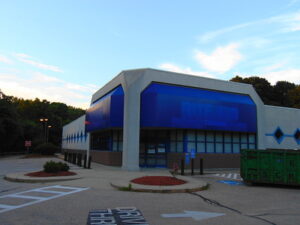The sewage spills at Washtenaw Community College should concern everyone in the county. WCC can certainly correct the cause of the spills -aging sanitary facilities on campus. But the damage that raw sewage can cause is far more widespread, and it is not so easy to correct.
The spills impact the Swift Run, which is a small tributary to the Huron River. It introduced raw sewage into the rainwater runoff system. That’s never supposed to happen because this directly pollutes the Huron River. So, what happens when raw sewage escapes the sanitary system? Major discharges of untreated human waste into waterways can cause significant increases in the amount of nitrogen in the water. That can fuel large algal blooms, which remove oxygen from the water, and can result in large fish kills.
Sewage spills of 3,000 (or 10,000) gallons – still not sure how much untreated sewage was discharged – will not kill fish but can deposit fecal coliform bacteria in the water column. These bacterial counts in the water will diminish significantly within a few days, but the fecal coliform bacterial counts in the sediment at the bottom of the waterway decline much more slowly.
Sewage spills can also introduce viruses, like Hepatitis A, adenovirus, Norwalk virus (norovirus), rotaviruses and even poliomyelitis into the waterways. Poliomyelitis has been under very tight control in the United States, but it is a water-borne disease. There had been no cases of polio in the United States since 1979 – until July 2022, when health officials in Rockland County, NY registered a single case of paralytic polio in a resident there. In August 2022, the New York City Department of Health and Mental Hygiene detected poliovirus in sewage samples, suggesting that polio is currently circulating in New York City.
There have been no known cases of poliomyelitis in Michigan in decades. However, epidemiologists have a saying: “An outbreak anywhere is an outbreak everywhere.” A highly mobile population makes disease transmission easy. Poliovirus is very problematic not only because it is extremely contagious, but also because it is mostly asymptomatic. A person can have and transmit polio without knowing it. In fact, that describes about 70% of polio cases.
Aside from viruses, untreated sewage can also contain dangerous bacteria and parasites. These include E. coli, salmonella, shigella, campylobacter, listeria, and leptospira, as well as Cryptosporidium and Giardia. Sewage spills can also trigger the growth of mold. This is especially dangerous when a spill occurs indoors. Mold can begin to grow almost immediately, which can cause additional health problems in certain individuals.
These are the consequences of raw sewage discharges that can’t be cleaned up as easily. And it’s why these events at WCC must be viewed and treated as a massive breach of the public trust. These sewage discharges were entirely preventable with the appropriate level of maintenance and surveillance of WCC’s sanitary system. Parts of the campus are approaching 60 years of age. Aging infrastructure requires more intensive and regular maintenance. No exceptions and no excuses.
Washtenaw County taxpayers send more than $60M to WCC every year. Of that money, WCC budgets $300,000 for maintenance. That’s one half of one percent. But without an Asset Protection policy, there is no incentive for the college president to prioritize maintenance. Instead, she prioritizes the hiring of Vice Presidents, plans for a hotel and retail spaces, and buildings the College does not need and will not maintain.
This was not an accident; this was neglect. We deserve more for our money.
Photo Credit: Adam Polselli , via Flickr





























